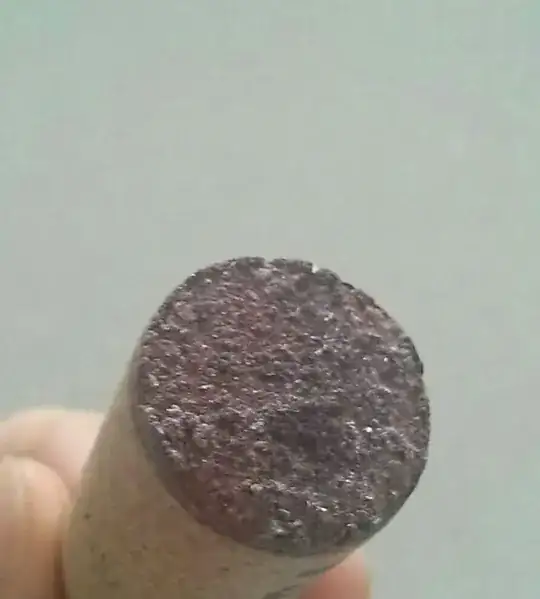I opened a recently purchased wine (a Grenache 2012), and the part of the cork that was in contact with the wine looked like the picture

Part of the residue looked like small crystals, some whitish and others reddish.
What is that residue, and how did it get there?